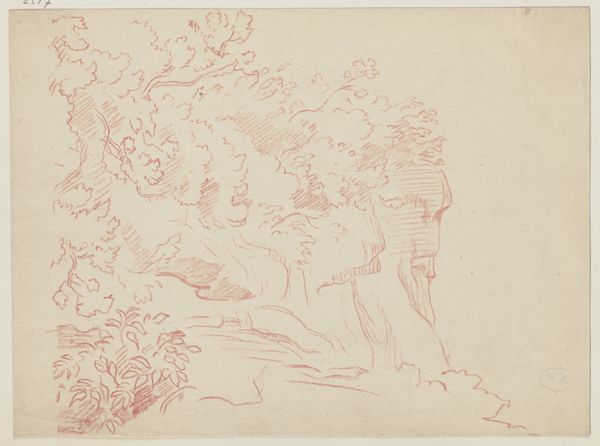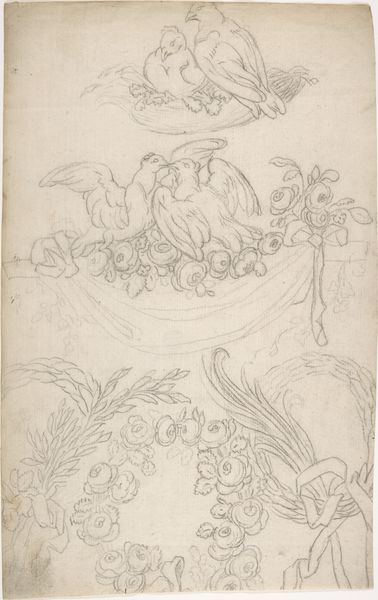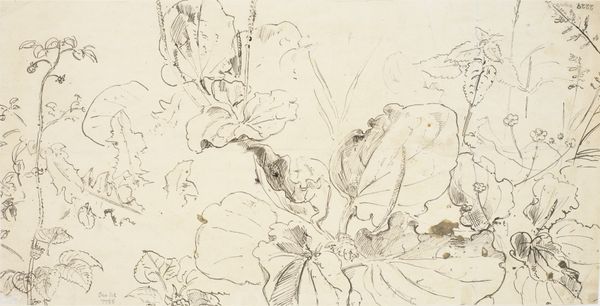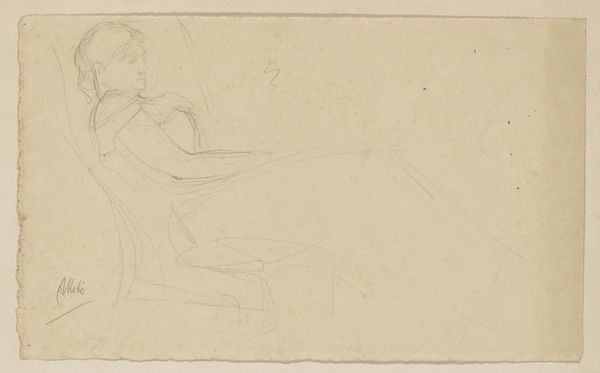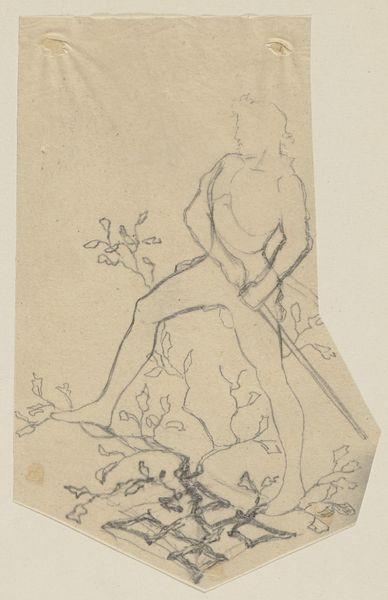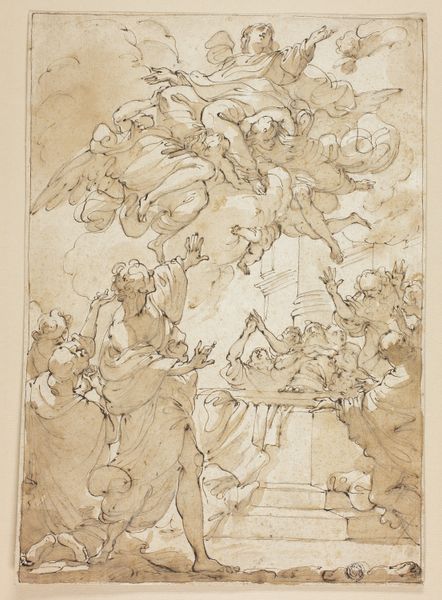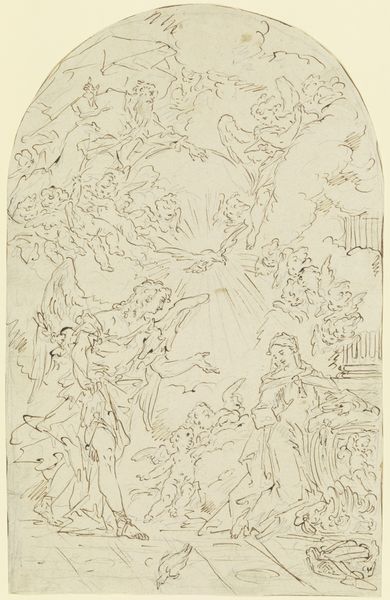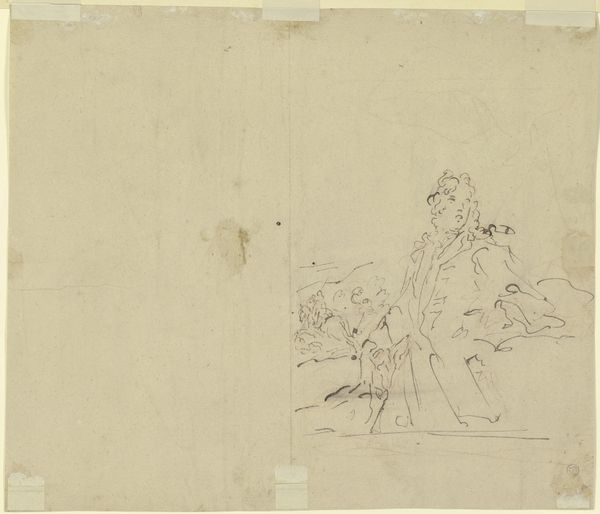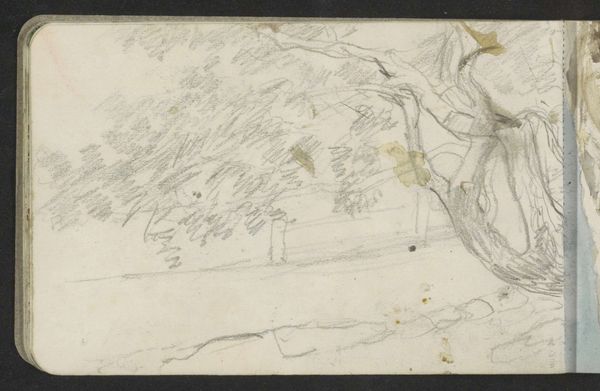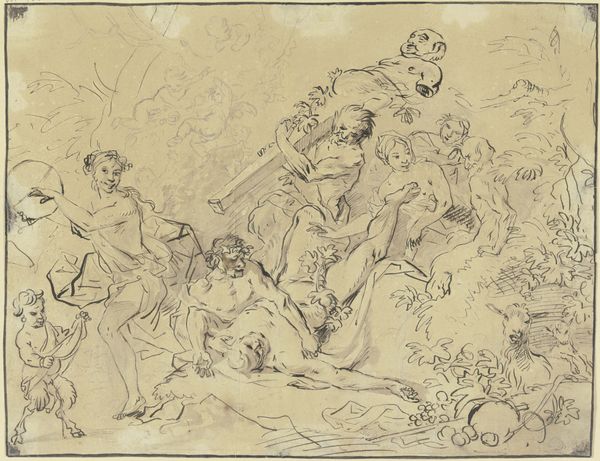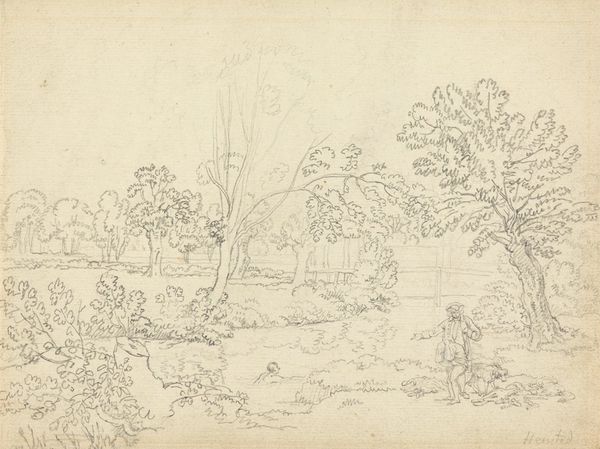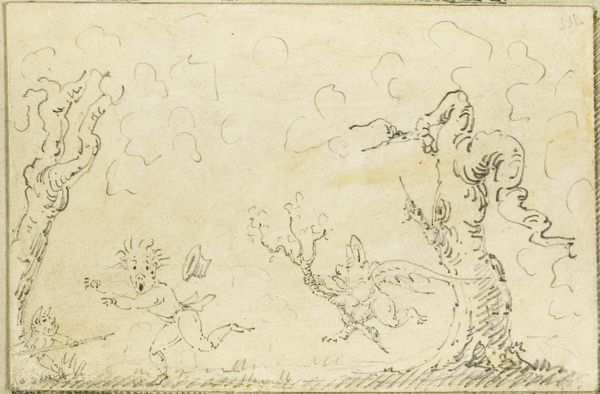
drawing, pencil
#
portrait
#
drawing
#
landscape
#
figuration
#
romanticism
#
pencil
#
nude
Dimensions: sheet: 8 x 13 1/16 in. (20.3 x 33.2 cm)
Copyright: Public Domain
Curator: Here we have a pencil drawing called "Beseeching Couple under a Tree," created by an anonymous artist sometime between 1775 and 1825. It's currently held here at the Metropolitan Museum of Art. Editor: My immediate impression is one of vulnerability and quiet desperation. The soft pencil strokes create a hazy atmosphere, making the figures seem fragile, almost ethereal. Curator: The drawing’s symbolism resonates deeply with the Romantic era's focus on intense emotions. The figures – a nude or partially draped woman reclining and a bearded man with his hands raised in prayer – present a fascinating study in gender roles within the framework of personal turmoil. What are they beseeching, and why? What power dynamics are at play here? Is the man asking on her behalf, perhaps constrained by societal norms, or is he acting on his own desire? Editor: I am particularly struck by the two potted plants in the drawing, each one hosting one or more birds perched above the floral arrangement. Considering the context, plants are traditional emblems of growth and life and have been represented across cultures as symbols for fertility, bounty, love, hope and/or faith. But if we factor in these figures' expressions of neediness, their situation suggests the inverse instead. Their environment betrays something sinister. Curator: It’s interesting how you connect the external, idyllic landscape with the internal struggles of the figures. The period also saw major social and political upheaval in Europe, impacting how artists depicted emotion and intimacy. If we acknowledge their need, do the artists mean for them to be stand-ins, emblems of their particular social-political circumstances? The viewer is ultimately challenged to decode this symbolic exchange within its era. Editor: That context is paramount to unraveling these delicate and potent symbols, yes. Overall, I see echoes of classical motifs reimagined through the lens of heightened emotional sensitivity characteristic of the late 18th-early 19th centuries. Curator: Agreed, it presents a potent, though unsettling, depiction of longing and hope. Editor: Indeed. There is far more than what the eye lets on at first glance, and this discovery is quite an adventure.
Comments
No comments
Be the first to comment and join the conversation on the ultimate creative platform.
